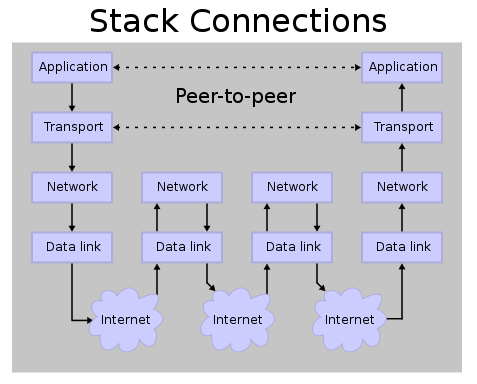Linux Networking Course
History
*Arpanet
*switched network
*TCP/IP
*spread in the 90's
TCP/IP
What is a protocol
*strict procedure how things are done
*communication between layers
*clearly defined interfaces
*data encapsulation
*example
TCP/IP protocol
*Application
*Transport
*Network
*Physical / Data link
Physical layer / Data link layer
*not much of a concern for us.
*different topologies (ethernet, wirless, DSL, modem etc)
*this is about the physical connection
*here the bits are shifted.
*how many Volt represent a 1, how many a 0
*ethernet address (HWaddr in Hex format)
Network layer
*IP ICMP
*IPv4 32bit written in dotted decimal notation
*65.212.180.178
*different classes
A starts with 0 B starts with 10 C starts with 110 D starts with 1110
*although outdated it roughly specifies the network and host part.
*Common now is the CIDR (Classless InterDomain Routing)
192.168.10.3/24
this actually stands for
11000000 10101000 00001010 00000011 11111111 11111111 11111111 00000000
private networks that are not routed
localhost 127.0.0.0/8
"network addresses" ending with 0
"broadcast addresses" ending with 255
routing
nat
configuration
Transport Layer
UDP (User Datagram Protocol)
connectionless
media-streaming
TCP (Transmission Control Protocol)
makes sure every packet arrives
if it didn't arrive, it will request it again
ftp-data-transfer
*connections through ports
*well known ports <1024 can be found in /etc/services
